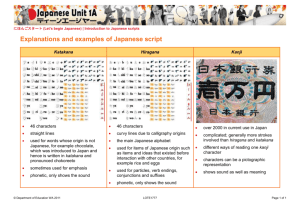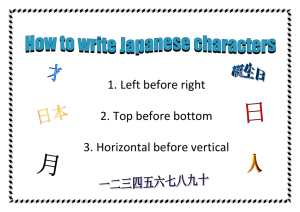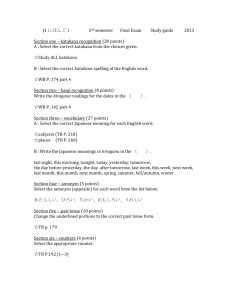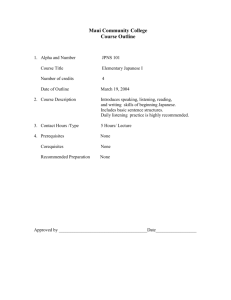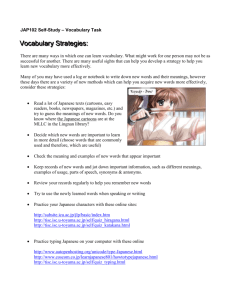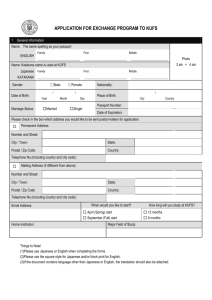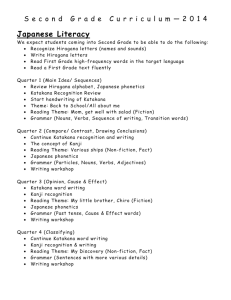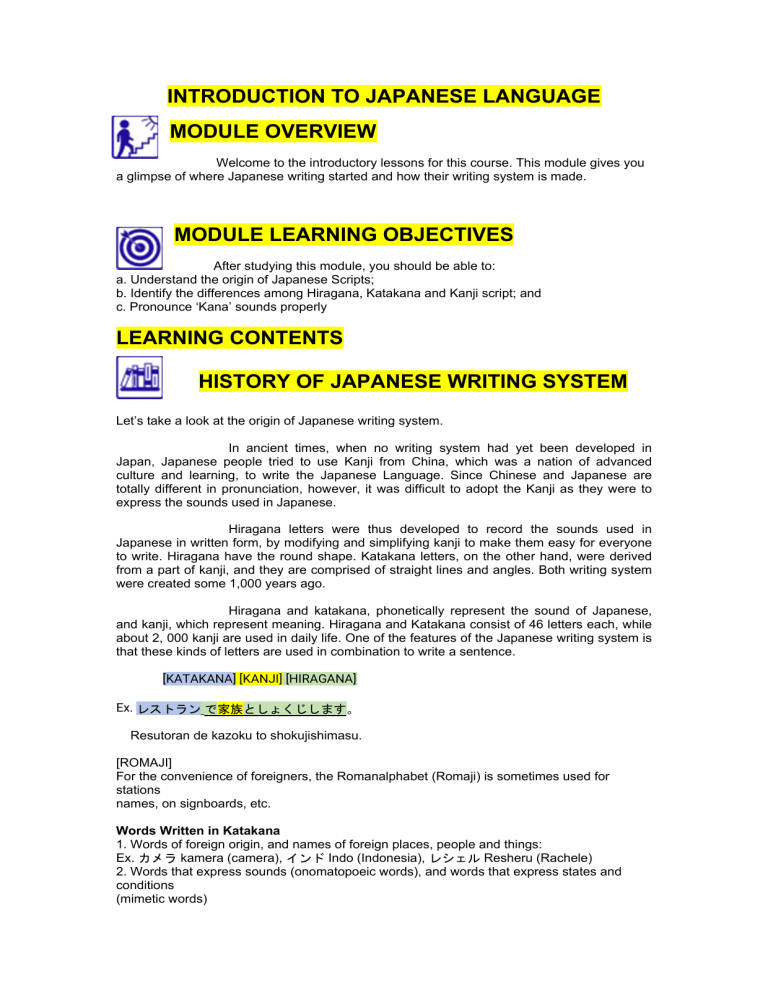
INTRODUCTION TO JAPANESE LANGUAGE MODULE OVERVIEW Welcome to the introductory lessons for this course. This module gives you a glimpse of where Japanese writing started and how their writing system is made. MODULE LEARNING OBJECTIVES After studying this module, you should be able to: a. Understand the origin of Japanese Scripts; b. Identify the differences among Hiragana, Katakana and Kanji script; and c. Pronounce ‘Kana’ sounds properly LEARNING CONTENTS HISTORY OF JAPANESE WRITING SYSTEM Let’s take a look at the origin of Japanese writing system. In ancient times, when no writing system had yet been developed in Japan, Japanese people tried to use Kanji from China, which was a nation of advanced culture and learning, to write the Japanese Language. Since Chinese and Japanese are totally different in pronunciation, however, it was difficult to adopt the Kanji as they were to express the sounds used in Japanese. Hiragana letters were thus developed to record the sounds used in Japanese in written form, by modifying and simplifying kanji to make them easy for everyone to write. Hiragana have the round shape. Katakana letters, on the other hand, were derived from a part of kanji, and they are comprised of straight lines and angles. Both writing system were created some 1,000 years ago. Hiragana and katakana, phonetically represent the sound of Japanese, and kanji, which represent meaning. Hiragana and Katakana consist of 46 letters each, while about 2, 000 kanji are used in daily life. One of the features of the Japanese writing system is that these kinds of letters are used in combination to write a sentence. [KATAKANA] [KANJI] [HIRAGANA] Ex. レストラン で家族としょくじします。 Resutoran de kazoku to shokujishimasu. [ROMAJI] For the convenience of foreigners, the Romanalphabet (Romaji) is sometimes used for stations names, on signboards, etc. Words Written in Katakana 1. Words of foreign origin, and names of foreign places, people and things: Ex. カメラ kamera (camera), インド Indo (Indonesia), レシェル Resheru (Rachele) 2. Words that express sounds (onomatopoeic words), and words that express states and conditions (mimetic words) Ex. トントン tonton (knock knock), ガタガタ gatagata (rattle) 3. Names of animals and plants are also frequently written in katakana. Ex. パンダ panda (Panda) Hiragana is mainly made of curved lines, while katakana consists of straight lines and angles. LEARNING ACTIVITY 1 Could you identify the Japanese scripts? Let’s check if you can identify Japanese scripts! In this activity, you have to underline the words written in Hiragana, encircle the words written in Katakana and box the words written in Kanji. 1. それ は 山田 です。 2. この パソコン は 私 の です。 3. その エアコン は いくら ですか。 4. わたし は ギター を かいたい です。 5. 大学 へ いきました。 JAPANESE PRONUNCIATION In the Japanese writing system, each ‘kana’ (hiragana and katakana) corresponds to a sound. Both hiragana and katakana consist of 46 letter each. Hiragana and katakana are pronouncing the same way. The first five characters are the five Japanese vowels. Japanese vowels are short compared to English vowels. The rest of the characters are consonant- vowel combinations, with the consonant always coming first. The one exception is the single consonant syllable “n”. The table below indicates the basic sounds of Japanese. Before you start learning the ‘kana’, familiarize yourself first with these sounds. To practice the pronunciation of the 46 main Japanese sounds, watch Nia’s video on “Japanese Pronunciation:46 Characters”. Click here at https://bit.ly/2QDecQj The Hiragana and Katakana chart is shown on the next page. 1). Basic Character + (“) (o). (“) = “ten ten” (o) = modified character called “maru”
